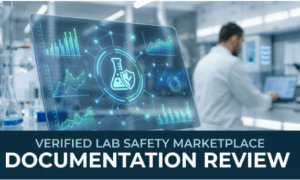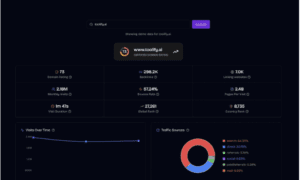Dhiraj Kumar Akula
In today’s fast-paced business world, executives are often faced with complex decisions that can have long-term implications for their organizations. To navigate these challenges effectively, they rely on data and insights that help them make informed choices. This is where Smart Information Systems (SIS) come into play. These systems utilize advanced technologies like artificial intelligence (AI), machine learning (ML), big data analytics, and cloud computing to deliver real-time insights and support decision-making processes.
1. The Role of Smart Information Systems
Smart Information Systems are designed to streamline the decision-making process by providing executives with accurate, timely, and relevant data. By automating data collection, analysis, and reporting, SIS significantly reduces the time executives need to spend sifting through large volumes of information. These systems ensure that key decision-makers have access to actionable insights, allowing them to respond swiftly to market changes, customer demands, and internal challenges.
The key technologies behind SIS include:
- Artificial Intelligence (AI): AI helps executives by providing predictive analytics, identifying trends, and offering recommendations based on historical data. It can also automate routine tasks, enabling executives to focus on strategic decisions.
- Machine Learning (ML): Machine learning algorithms improve over time, learning from data to provide more accurate predictions. This allows executives to make decisions based on evolving data patterns.
- Big Data Analytics: With access to vast amounts of data, SIS can analyze complex datasets from multiple sources, offering deep insights that traditional methods might miss.
- Cloud Computing: Cloud-based systems ensure that data is accessible from anywhere, providing flexibility and real-time collaboration across teams, making it easier for executives to make informed decisions, even when they are on the move.
2. Data-Driven Decision Making
Executives today have an abundance of data at their disposal. However, making sense of this data to drive meaningful decisions can be a daunting task. Smart Information Systems help by filtering out irrelevant data and highlighting the most critical information needed for decision-making.
For example, in sales and marketing, SIS can provide executives with insights into customer behavior, purchasing trends, and market forecasts. This allows companies to anticipate demand, optimize inventory, and develop targeted marketing strategies. In finance, SIS can assist in budgeting, forecasting, and risk management by analyzing historical financial data and predicting future outcomes.
3. Enhanced Strategic Planning
Strategic planning is a crucial aspect of leadership, and Smart Information Systems are invaluable in this regard. By providing real-time insights into market conditions, competition, and consumer preferences, SIS enable executives to make informed decisions that align with their long-term goals.
For instance, executives can use SIS to track key performance indicators (KPIs) across departments and evaluate the performance of various business units. They can also use these insights to identify areas of improvement, allocate resources efficiently, and optimize operations. With the ability to analyze both internal and external data, SIS enhance decision-making by ensuring that all factors are considered before executing a strategy.
4. Real-Time Decision Making
The pace of business is accelerating, and executives are often required to make decisions in real time. Smart Information Systems allow decision-makers to access live data, ensuring that their choices are based on the most up-to-date information. This is particularly crucial in fast-moving industries such as finance, retail, and technology, where trends can change quickly.
For example, in the stock market, real-time data analytics provided by SIS can give executives an edge in making quick, informed decisions. Similarly, in operations management, live updates from the supply chain, inventory systems, and customer feedback can help executives adjust strategies on the fly to prevent problems before they escalate.
5. Improved Risk Management
Risk is an inherent part of business, and managing it effectively is essential for the long-term success of any organization. SIS assist executives by providing tools to assess and mitigate risks. Through predictive analytics and scenario modeling, these systems can forecast potential challenges and offer recommendations on how to handle them.
For instance, in the finance sector, SIS can predict market volatility or identify emerging risks based on historical data. In manufacturing, SIS can monitor equipment performance in real time and alert executives to potential failures, reducing downtime and maintenance costs. This proactive approach to risk management empowers executives to make decisions that minimize negative impacts and maximize opportunities.
6. Collaboration and Communication
Effective decision-making is often a collaborative process that involves input from various departments and stakeholders. Smart Information Systems facilitate communication and collaboration by providing a centralized platform where data and insights can be shared across the organization. This ensures that all team members are on the same page and can contribute to the decision-making process.
For example, an executive team can use a cloud-based SIS to review performance reports, discuss strategies, and track progress in real time. By improving communication, SIS help foster a more agile and responsive organizational culture.
7. Enhanced Customer Insights
In the digital age, customer expectations are constantly evolving. Smart Information Systems enable executives to better understand their customers by gathering and analyzing data from various touchpoints, including social media, websites, and customer surveys.
With these insights, executives can tailor their products and services to meet customer needs more effectively. They can also predict future trends and identify emerging markets, helping them stay ahead of the competition. By focusing on customer-centric decision-making, SIS contribute to improved customer satisfaction and loyalty.
Conclusion
Smart Information Systems are transforming the way executives make decisions by providing them with the tools they need to access, analyze, and act on data in real time. From improving strategic planning and risk management to enhancing customer insights and collaboration, these systems empower executives to make better, faster, and more informed decisions. As technology continues to evolve, the role of SIS in executive decision-making will only grow more critical, enabling organizations to stay competitive in an increasingly complex business environment.
Written By: Dhiraj Kumar Akula





























